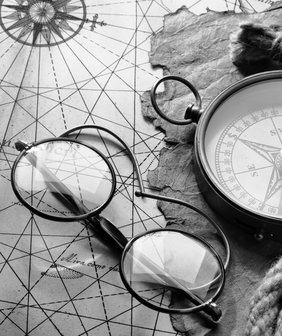THE AMAZING HISTORY OF EYEGLASSES
Since the beginning of time, people have suffered from poor eyesight.
But when were the first eyeglasses developed to remedy this problem?
And who invented glasses in the first place?
Let’s go on a journey through time together…
HOW MONKS WITH AGE-RELATED FARSIGHTEDNESS WERE ABLE TO READ AGAIN
The history of eyeglasses really began with the publication of "The Book of Optics". In this seven-volume work, Cairo-born mathematician, meteorologist and astronomer Abu Ali al-Hasan ibn al-Haytham (ca. 965-1040), later known in Europe as Alhazen, outlined the use of a glass sphere to magnify small things.

Development of eyeglasses really got underway when the "Book of Optics" was translated into Latin in 1240, making it accessible to a broader audience. Inspired by Alhazen's findings, monks in Western Europe began to develop visual aids. The reading stone, a hemispherical lens made of beryl, a rock crystal, and quartz, was born (in fact, the German word for reading glasses “Brille” is derived from the word beryl). Once placed directly onto reading material, the stone magnified the words, helping monks with farsightedness to read their writings again.
While the reading stone was a great help to the monks, it was still a long way from reading glasses as we know them today.
RIVET SPECTACLES, A BREAKTHROUGH IN EYEWEAR
Our story now takes us to Italy, or more precisely to Murano, a small island cluster north of Venice, which for a long time was considered the Mecca of glassmaking. The Cristalleri, as the glassmakers were called, had to virtually sacrifice themselves for the making of the glass. To protect the secret of the production of white glass, they were even forbidden from leaving the Murano. Those who did so were severely punished.
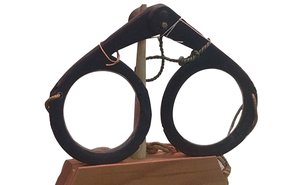
At the end of the 13th century, Italian glassmakers cut two convex lenses (for farsighted people), set them in wooden rings with handles, and fastened both parts together with a rivet.
The invention of these rivet glasses marked a first breakthrough in the development of modern eyeglasses. While these models did not yet have temples or other fastening mechanisms, they could be held in front of the eyes.
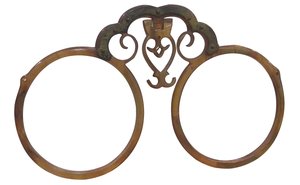
Over time, the glassmakers optimised their product. They ground the lenses flatter to expand the field of vision, placed the lenses in a frame, and replaced the handles of the rivet glasses with a curved bow. The first bow spectacles were born.
NO CAP NO GLASSES: HOW EYEGLASS HOLDERS WERE DEVELOPED
With the invention of the printing press in 1445 by Johannes Gutenberg, there was a rapid increase in demand for eyeglasses and their development picked up speed. Another milestone in the history of eyeglasses was the creation of cap glasses in the 15th century.
The cap spectacles or spina frontalis are characterized by a metal construction that is attached to a low-set cap or lady’s bonnet. This construction was further developed in the 16th century by the creation of the headband glasses. This new version eliminated the need to wear a cap, as the spectacles could be attached directly to the head by means of a metal hoop.
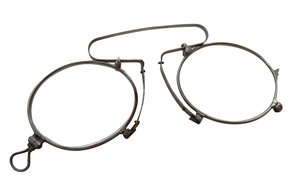
Also in the 16th century, with the development of the monocle, a further improvement of the reading stone came into fashion. Around the same time, the so-called pince-nez was invented. Here, the two glasses were connected by means of a spring clip made of iron or copper, literally pinching the nose as they held on. Although this clip had a leather pad, it still caused unpleasant pressure on the bridge of the nose.
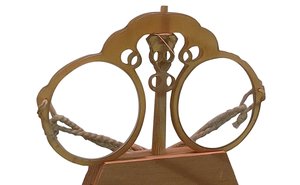
Thus, at the end of the 16th century, thread loop spectacles came along, in which the spectacles were fastened behind the ears by means of a thread. In some parts of Asia, thread loop spectacles are still worn today.
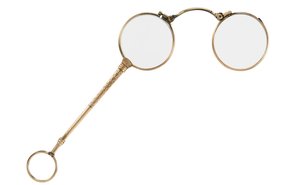
In the 18th century, the lorgnette appeared. This look was characterized by an elegant stem, which was used to hold the glasses in front of the face. The lorgnette was particularly popular with women.
EARS AS NATURAL HOLDING AIDS & FOR MORE WEARING COMFORT: GLASSES AS WE KNOW THEM TODAY
It was not until the beginning of the 18th century that the idea of using ears as a support arose. This is how the ring end or temple spectacles were developed and with them the contemporary eyeglasses design that we know and appreciate today.
Of course, this early model would still require further optimisation over the years. Thus, wearing comfort was improved over the centuries through better-quality temples, nose pads and lighter materials.
Spectacle optimisation and enhancement of features are areas of research that are still very important to CHARMANT today. Our goal with our eyewear collections is to offer our customers the highest possible wearing comfort that can be found on the market.
OTHER DEVELOPMENTS RELATED TO EYEGLASSES
By the way, there have also been exciting advances in lenses over the centuries. It was not until the 16th century that concave lenses were created to combat myopia.

The invention of the first progressive spectacles actually goes back to former U.S. President Benjamin Franklin. It bothered him that he constantly had to switch between his distance and reading glasses, which is why, in 1784, he came up with the idea of having one lens for nearsightedness and one lens for farsightedness inserted into his frame. Bifocal lenses are still called Franklin lenses today.
AND HOW WERE SUNGLASSES BORN?
In the 18th century, eyeglasses were increasingly used for protection from the sun. However, it was not until after World War 2 that it was possible to prove that UV radiation from sunlight is harmful to our eyes. We have already written a blog article on the effect of UV radiation on eye health. If you are interested in this topic, you can learn more here.
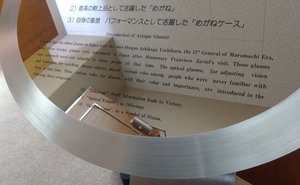
AMAZING TIME TRAVEL THROUGH THE HISTORY OF THE DEVELOPMENT OF EYEGLASSES
Our conclusion is no surprise: CHARMANT founder Kaoru Horikawa himself is also fascinated by the history of the origins of eyewear and owns a handsome collection of antique eyewear, which is on display in its own small museum room at our Japanese CHARMANT headquarters. Looking at the exhibits is also like an remarkable trip through time.
It's amazing how a visual aid has blossomed into a true fashion accessory over the years. One that is no longer a chore to wear but is fun and actually adorns faces.


Picture sources: CHARMANT museum, Shutterstock, Pixabay & iStock
